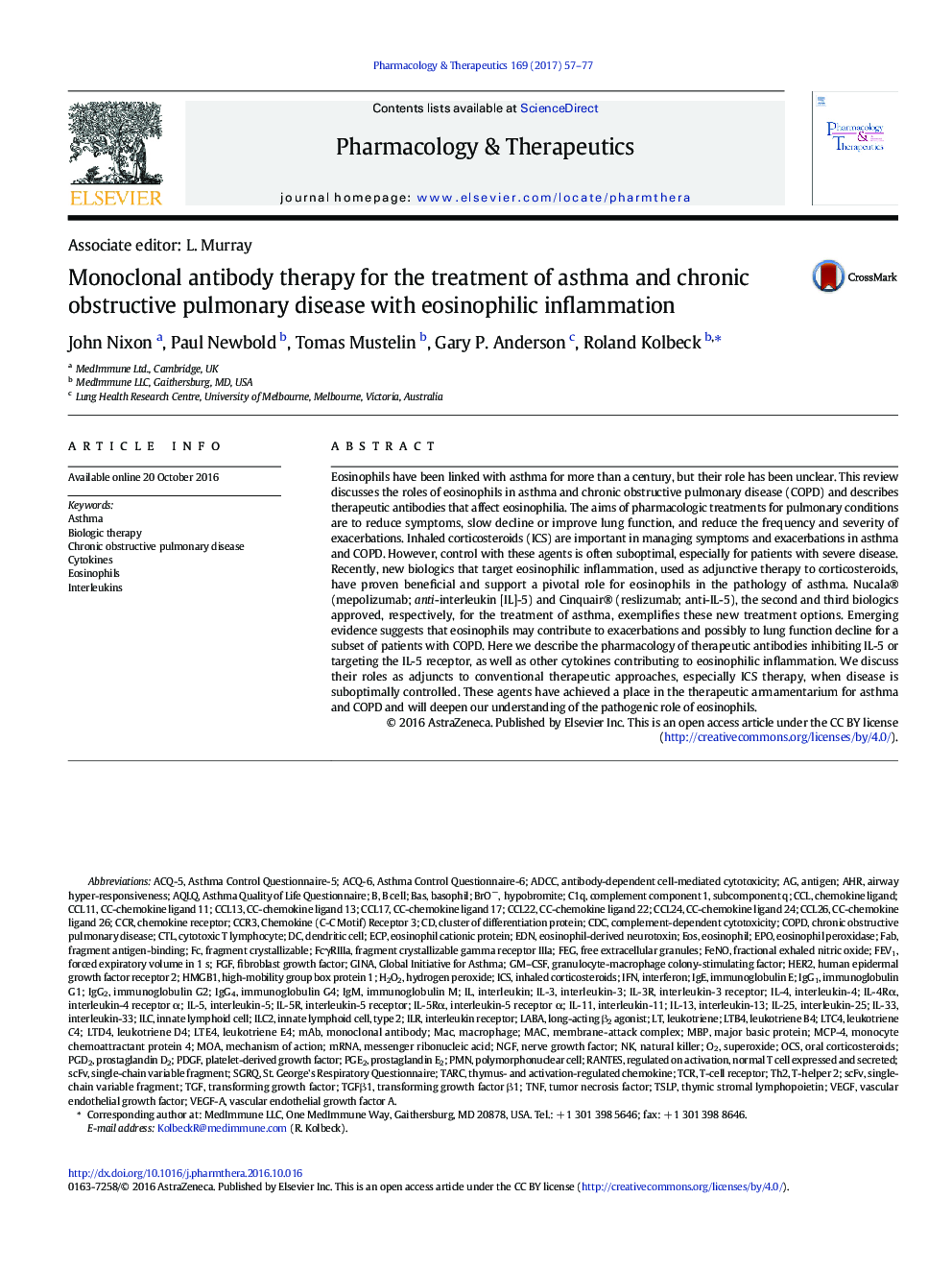| Article ID | Journal | Published Year | Pages | File Type |
|---|---|---|---|---|
| 5557769 | Pharmacology & Therapeutics | 2017 | 21 Pages |
Eosinophils have been linked with asthma for more than a century, but their role has been unclear. This review discusses the roles of eosinophils in asthma and chronic obstructive pulmonary disease (COPD) and describes therapeutic antibodies that affect eosinophilia. The aims of pharmacologic treatments for pulmonary conditions are to reduce symptoms, slow decline or improve lung function, and reduce the frequency and severity of exacerbations. Inhaled corticosteroids (ICS) are important in managing symptoms and exacerbations in asthma and COPD. However, control with these agents is often suboptimal, especially for patients with severe disease. Recently, new biologics that target eosinophilic inflammation, used as adjunctive therapy to corticosteroids, have proven beneficial and support a pivotal role for eosinophils in the pathology of asthma. Nucala® (mepolizumab; anti-interleukin [IL]-5) and Cinquair® (reslizumab; anti-IL-5), the second and third biologics approved, respectively, for the treatment of asthma, exemplifies these new treatment options. Emerging evidence suggests that eosinophils may contribute to exacerbations and possibly to lung function decline for a subset of patients with COPD. Here we describe the pharmacology of therapeutic antibodies inhibiting IL-5 or targeting the IL-5 receptor, as well as other cytokines contributing to eosinophilic inflammation. We discuss their roles as adjuncts to conventional therapeutic approaches, especially ICS therapy, when disease is suboptimally controlled. These agents have achieved a place in the therapeutic armamentarium for asthma and COPD and will deepen our understanding of the pathogenic role of eosinophils.
